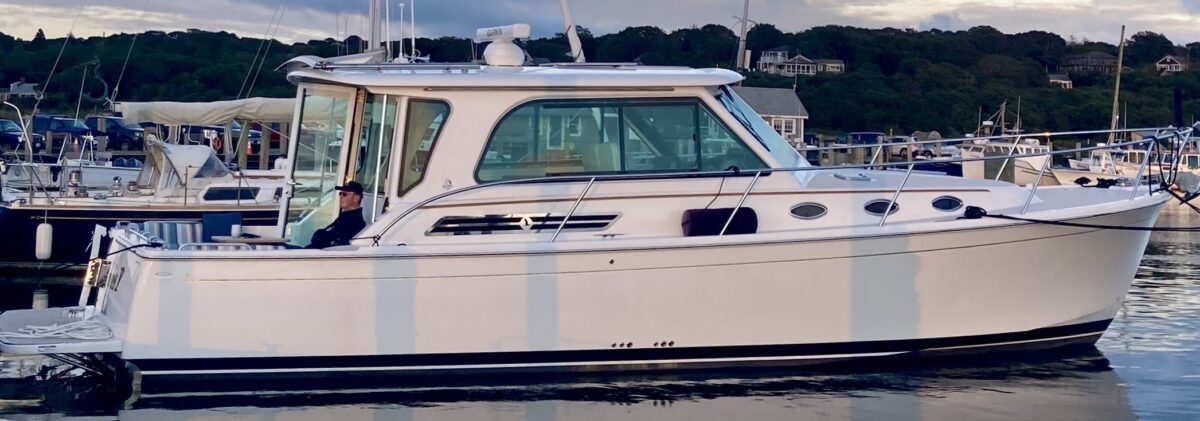Change of plans! Our plan when we bought this boat in the Fall was to live aboard in New England in the summer and then find a condo in Florida for the winter. Well, we found a Florida condo but now we plan on moving down there permanently. Just too complicated to keep a boat up here and a condo down there, so we are selling the boat.
For anyone who might be interested, She is a 2024 model with about 30 hours on the Volvo D600 inboard. We had just enough time after we bought her to do a few trips and uncover any new boat warranty items. We spent the winter in heated storage in Bristol, RI working with the builder to knock off the punch list and to add a few new toys like an engine room camera, dual racor fuel filters and the like. She is literally “better than new”. $1,195,000. The wait for a new 372 from the factory is over a year and will cost more, plus whatever the tarrifs may do. Privateer is listed by Joyce Richards at Boston Yachts and is advertised on Yacht World.
https://www.yachtworld.com/yacht/2024-back-cove-372-9770540
You may want to go to the Back Cove Yachts web site and review the BC372 in general. If you are on Facebook you can get a good look at our specific boat by viewing the video that Boston Yachts prepared. https://www.facebook.com/reel/868717925225074
Here is a picture of her at Bristol Marine.

Here is a list of the upgrades to the boat. Just about everything Back Cove Yachts offers, and then some.
Privateer Options and upgrades: (9 April 2025)
Ultraleather upholstery
Additional Novakool freezer under helm seat
Additional Vitrofrigo freezer under helm storage compartment
TV’s in saloon, master and guest staterooms
Sirius XM receiver and antenna for Fusion stereo with pre-amp.
OceanAir blinds in saloon
Easy Dock system with stern thruster
Victron inverter/Charger (house bank) with remote control; separate Victron charger for start bank
Victron smart shunts for house and start battery banks
Victron trickle charger
Zipwake trim control system
Electric Power Steering (EPS)
Engine room camera
Dual Racor 1000 fuel separator/filters
Fresh water washdown in anchor locker
Raw water washdown fore and aft
Shore water inlet in cockpit
Oil change system
Dry bilge system
Power center windshield window
Centerline cockpit seat and cushion
SureShade cockpit awning system
Teak cockpit table, varnished
Teak swim platform
Canvas covers for cockpit cushions
Custom mattress in master
Custom fitted bedding for both beds
Ultra Stainless Steel 21kg anchor, 50’ SS chain, 150’ line
Lines, fenders and safety gear
Electronics:
Dual Garmin 8616 displays
Garmin 315 VHF with remote speaker
Garmin Fantom Radar with 4’ array
Garmin 800 AIS
Garmin Reactor autopilot
Garmin sonar
Garmin Volvo 7” engine display
Starlink High Performance system
Spring Commissioning:
Oil and filter changes
impellers replaced
Zincs renewed
Buff and wax
Bottom paint
Varnished eyebrow and cockpit tables
If you are interested in the boat and want to contact us, use the contact form, below or contact Joyce Richards at Boston Yachts. (617) 633-1112












You must be logged in to post a comment.